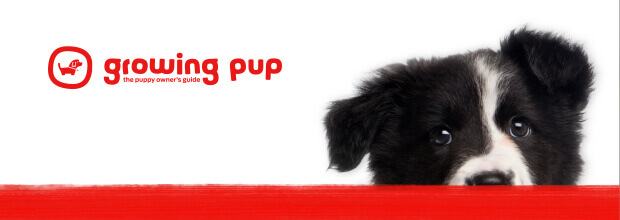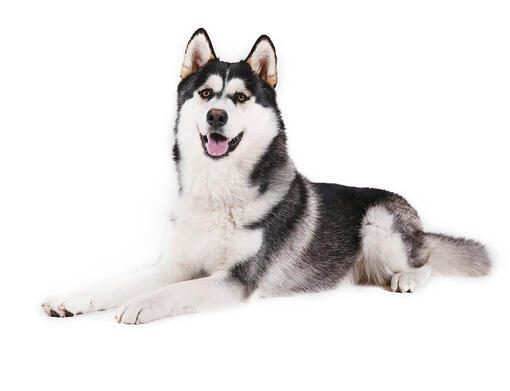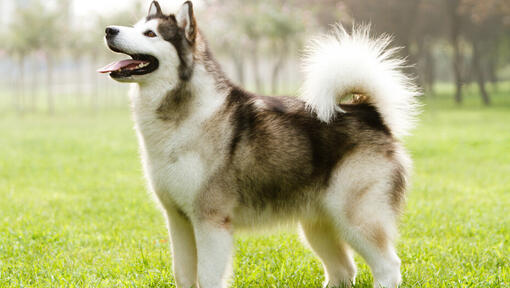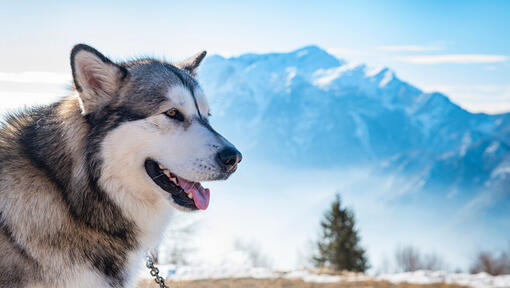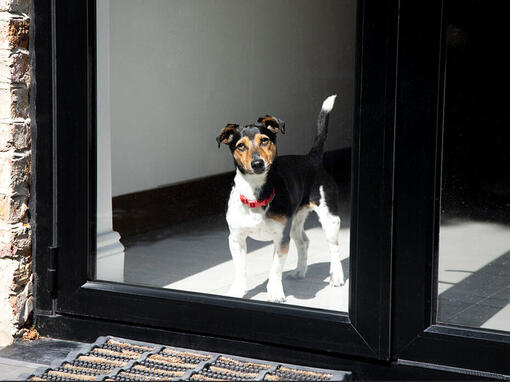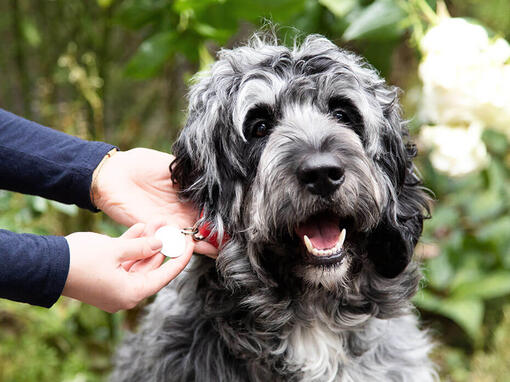Personality
The Malamute dog is an affectionate, friendly dog who is devoted to their family, though not the ideal breed for a first-time owner as they can be challenging to own. As well as their almost insatiable need to run, they love to dig and howl, are often escapologists, and can have a high prey-drive for small, furry creatures – be they squirrels, cats or even small dogs. For owners who understand them and can give them what they need to be healthy and happy however they make outstanding and head-turning companions.



